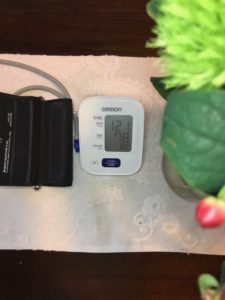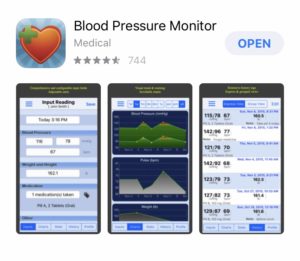Looks Like We Finally Know the Most Accurate Way to Measure Blood Pressure. For years we have relied on office blood pressure monitoring for blood pressure management. In the previous podcast, I told you why it is essential to know your blood pressure target goal. In reality, it is not enough to just know your blood pressure target goal. You must use this knowledge when measuring and logging your blood pressures at home and ask your health care provider when to seek help.
Since hypertension usually has no symptoms associated with it, it is crucial to monitor your blood pressure at home to know what your target blood pressure goal is. You need to know your target blood pressure so that you would know when to seek help.
Measure your blood pressure at home and log your measurements. I will talk about home blood pressure monitoring in the next episode of Hypertension Resistant to Treatment podcast. Say tuned. Thanks for listening and subscribe to this podcast so you will automatically get all new weekly episodes.
For example, you would need to call your health care provider with severe blood pressure readings that are persistent. Call 911 for stroke symptoms or chest pain and go to the emergency room with severe blood pressures associated with headaches or other symptoms. However, mild or moderate blood pressure elevations without symptoms would require a call to your provider for an appointment to evaluate your blood pressure, log, and medication.

Take your blood pressure using the American Heart Association step-by-step instructions with a validated arm cuffed home blood pressure monitor with an arm cuff for the most accurate measurements at home. I recommend an Omron blood pressure monitor because it is validated, easy to use, and its the one we use in research. Prices may vary, but you can usually purchase an Omron blood pressure monitor for as little as $39.00 from Amazon. The standard-sized blood pressure monitor arm cuff size is 9-17 inches. Before you purchase your monitor, measure your arm at your bicep muscle. Use this measurement to determine the size cuff you will need.
Do you know that home blood pressure monitoring is the most accurate type of blood pressure monitoring next to the gold standard if taken correctly? The gold standard blood pressure monitoring is an ambulatory blood pressure monitoring. If you are like the average person, you probably never heard of the ambulatory blood pressure monitoring because it is not widely available in America.
Ambulatory blood pressure monitoring is measured at home over twenty-four hours using a monitor that is placed on your arm in the medical clinic. Your health care provider will set the monitor to measure your blood pressure every 15 to 30 minutes over twenty-four hours. Average blood pressures will be calculated for daytime and nighttime.
The hypertension guidelines have recommended home blood pressure monitoring for almost 20 years. The most current hypertension guidelines have clearly laid out how to monitor your blood pressure at home. Yet, we do not know how to utilize home blood pressure measurements in the clinical setting.

Do your healthcare provider a favor and ask what type of log would work best for you and which your provider would prefer. This will assure that your log would be useful for you and your provider’s clinical workflow.
Theses are my unbiased and evidence-based recommendations.
Get the most accurate blood pressure monitor at this link:
Monitor your blood pressure at least once a week, keep a log, and share your diary with your health care provider. Report any moderate readings soon and report any severe measurements immediately to avoid these mistakes. Go to 30 days to a Better Blood Pressure for a step by step approach to obtaining normal blood pressure.
Disclaimer: This blog contains affiliate links. This means that I receive a small commission if you purchase using that link at zero cost to you. Thank you for using this link to support this blog!
Resources

https://www.acc.org/~/media/Non-Clinical/Files-PDFs-Excel-MS-Word-etc/Guidelines/2017/Guidelines_Made_Simple_2017_HBP.pdf